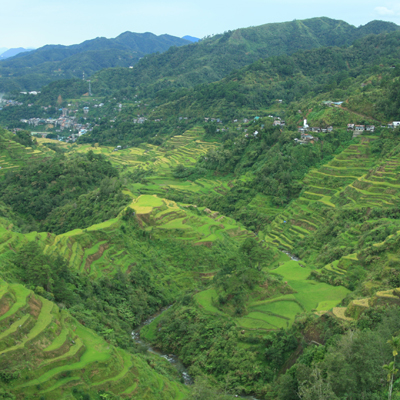Agriculture
Socioeconomic Issue on Spotlight

Agriculture remains to be the backbone of the Philippine development agenda. According to the Philippine Development Plan (PDP) 2011–2016, the agriculture and fisheries sector contributed 18.4 percent to the country’s gross domestic product in 2004 to 2010. In the same period, agricultural exports increased from USD 2.5 billion to USD 4.1 billion. Moreover, almost 12 million Filipinos—or 35.1 percent of the total workforce—are engaged in agriculture-related work. However, the current state of agriculture in the country is marred by low productivity, declining employment share, inferior technology and infrastructure, complex distribution system, climate change and natural resource degradation, and rural poverty.
In a discussion paper published by the Philippine Institute for Development Studies (PIDS), Dr. Roehlano Briones, a PIDS senior research fellow, argues that to achieve and sustain development, it must be anchored on productivity growth in agriculture. As a strategy, the Philippine government, through the PDP, has committed to: (1) improve productivity and increase rural incomes, (2) intensify programs on building resilience to climate change, and (3) enhance policy environment and governance.
A review of the agricultural policy environment in the Philippines shows that it is highly biased on rice and corn primarily because these crops are the main sources of livelihood of the majority of farmers. But according to a book published by the Philippine APEC Study Center Network (PASCN) and PIDS, this bias on certain agricultural products, particularly in terms of policy and research and development, has constrained efforts to promote rural diversification. Dr. Liboro Cabanilla, a professor at the University of the Philippines Los Baños and one of the authors of the PIDS-PASCN book, explains that because exports have remained concentrated on traditional commodities such as rice and corn, new sources of growth for agriculture have been limited.
With over 100 million people to feed, the call for the development of the Philippine agricultural sector has become more urgent. A poverty study by Dr. Celia Reyes, another PIDS research fellow, and her team, shows that three out of four poor Filipinos come from agricultural households. To achieve optimal agricultural growth, a World Bank policy paper encourages investment in manpower and infrastructure. As agriculture impacts employment and food affordability, appropriate policies and sustained government support for the sector may help reduce rural poverty. Moreover, with the integration of the Association of Southeast Asian Nations (ASEAN), the Philippines has to focus on developing its agricultural sector to increase its comparative advantage relative to other ASEAN member-countries.
A number of studies in the SERP-P tackle the complex issues hounding the agricultural sector. Some studies are sector- and crop-specific, while others are centered on policy, implementation, and assessment. There are also studies that link poverty, infrastructure, social protection, and financing to agriculture.


